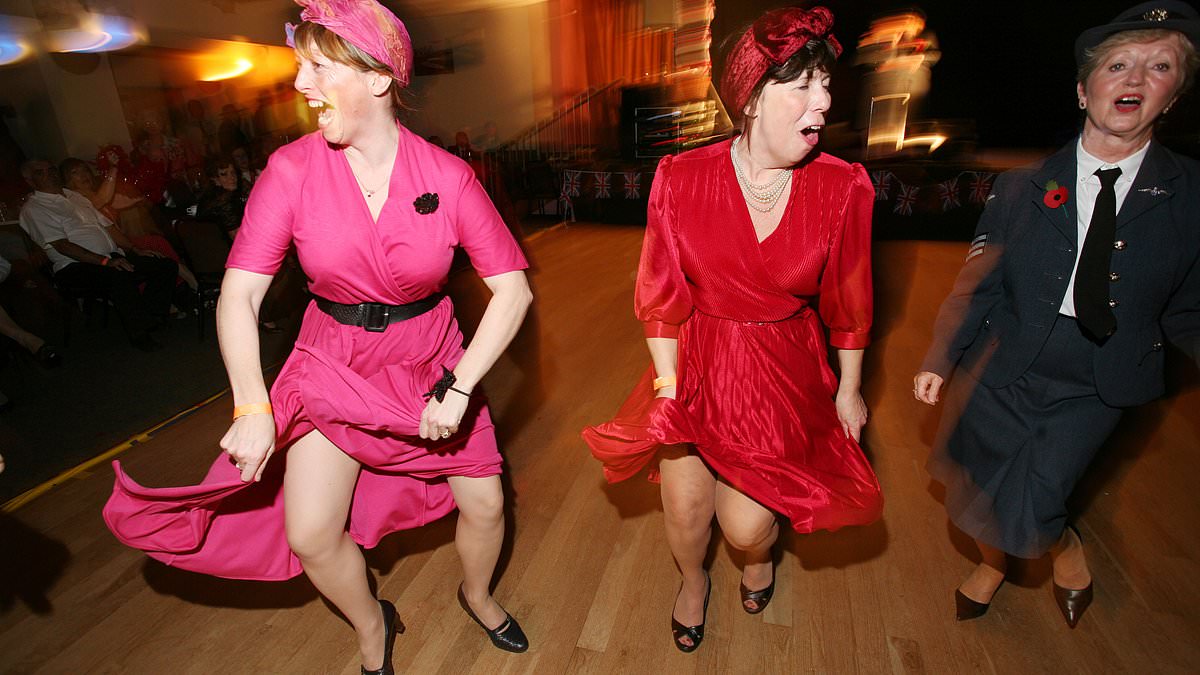QUESTION: What are the origins of the song Knees Up Mother Brown? What do the words mean?
Knees Up Mother Brown is thought to date to the 1800s. It was a working-class drinking song sung in East End pubs.
It was popular during wartime and there is a record of Mother Brown being sung on Armistice Night, November 11, 1918. Yet it wasn’t until the late 1930s that a version was published by Harris Weston and Bert Lee, a British songwriting and producing duo. Their version became the standard:
Knees up Mother Brown
Knees up Mother Brown
Under the table you must go
Ee-aye, Ee-aye, Ee-aye-oh
If I catch you bending
I’ll saw your legs right off
Knees up, knees up
Don’t get the breeze up
Knees up Mother Brown.
In 1940, it was popularised by Elsie and Doris Waters’s cockney characters, Gert and Daisy.
Q: Ed Sheeran looks like he uses smaller acoustic guitars than usual. What are these?
Nick Fletcher, Malton, North Yorks
Q: Do any of the countries in Africa or Asia still drive on the left? Have any changed?
Terry Severin, Glasgow
Q: Have there ever been any alleged alien encounters that include descriptions of what clothes they were wearing?
Peter McNerney, Sheffield
The actual meaning isn’t important as such, but the funny images and repetitive language encourage a raucous sing-a-long. A ‘knees up’ is a booze-up and an exhortation to keep dancing and singing, while ‘Don’t get a breeze up’ means don’t make a fuss.
An interesting theory is that the song was a sly dig at Queen Victoria and her close relationship with her Scottish ghillie companion John Brown after the death of her husband Prince Albert. Here ‘knees-up’ would have a sexual connotation.
Carrie Powell, London SE15
QUESTION: How many gears does a Tour de France bike have? How has this changed over the years?
Derailleur gears, a gear system based on the principle of ‘derailing’, or shifting the bike chain from one sprocket (toothed gear wheel) to another, first appeared in the early 20th century.
Despite the benefit of multiple gears, Tour de France founder Henri Desgrange prohibited them. Some riders used a fixed-wheel bike with a flip-flop rear hub. There was a sprocket on each side, meaning the rider could hop off his bike, take the wheel off, and flip it around to provide a different gear ratio.
Derailleur gears were permitted from 1937 and Roger Lapebie became the first pro to win the Tour with them. All riders had to use the Super Champion, a system designed by Swiss rider and manufacturer Oscar Egg. This had two chainrings up front by the pedals and three or four on the rear cassette, giving six or eight gear options.
However, these were still not the derailleurs we know today. Instead of a simple switch, cyclists would have to reach down to grasp a lever right next to the wheel. Using this lever, they would physically move the chain.
When Shimano launched the Dura-Ace 7400 with STI (Shimano Total Integration) in 1990, they revolutionised the system by integrating the gear change lever with the brake levers on the hoods of the handlebars. Now gears could be changed with a flick of the fingers.
The next big leap forward was electronic gear shifting after Shimano introduced the Dura-Ace 7970 with Di2 (Digital Integrated Intelligence) in 2009. This used a battery for power and small motors in the derailleurs to move the chain seamlessly up and down the gears. These systems could be precisely customised to suit each rider’s particular style.
Cadel Evans’s victory in the 2011 Tour de France saw them become standard. Today most bikes that compete in the race have between 20 and 24 gears.
Francis Smith, Grassington, North Yorks
QUESTION: Why do soft foods go hard when exposed to fresh air?
Baked foods, such as bread, cake or biscuits, tend to harden when exposed to fresh air due to staling and retrogradation.
These items often contain a significant amount of water, which keeps them soft and tender.
When exposed to air, moisture from the food evaporates, leading to dehydration. As the food loses moisture, its texture becomes harder and drier.
Retrogradation is to do with starch, a major component in many soft foods. When these foods are baked, the starch granules absorb water and gelatinize, making the food soft.
However, following baking, the starch molecules, when exposed to air or any cooling, start to realign and recrystallize. This leads to the food becoming more rigid over time.
Conversely, certain foods, especially those that are dry or crispy, such as crackers and crisps, go soft when exposed to air.
This is because they absorb moisture from the air, a process which occurs when the humidity in the air is higher than the moisture content of the food.
H. W. Reeves, Cardiff
